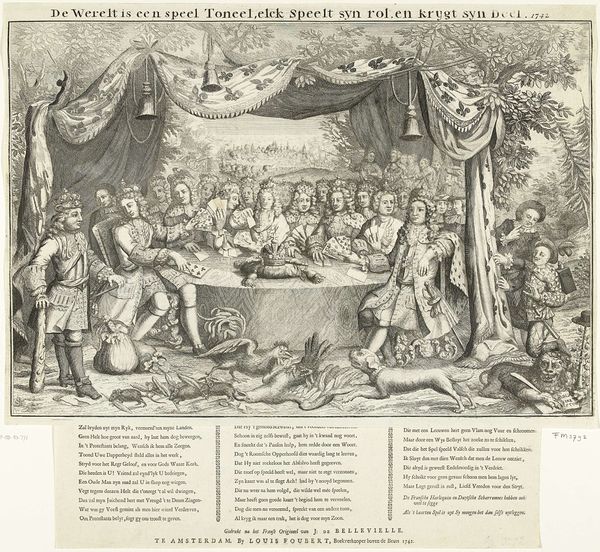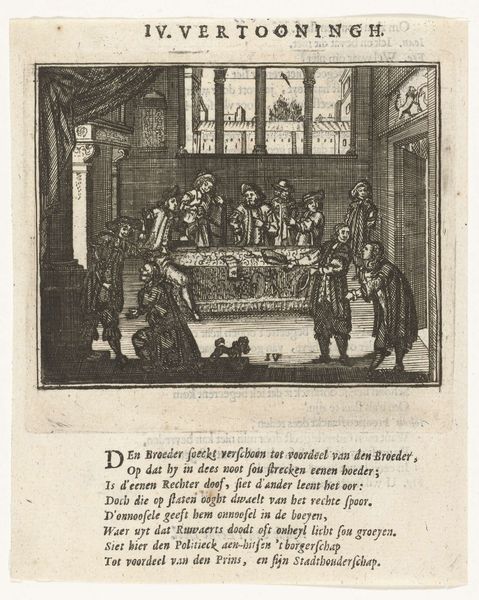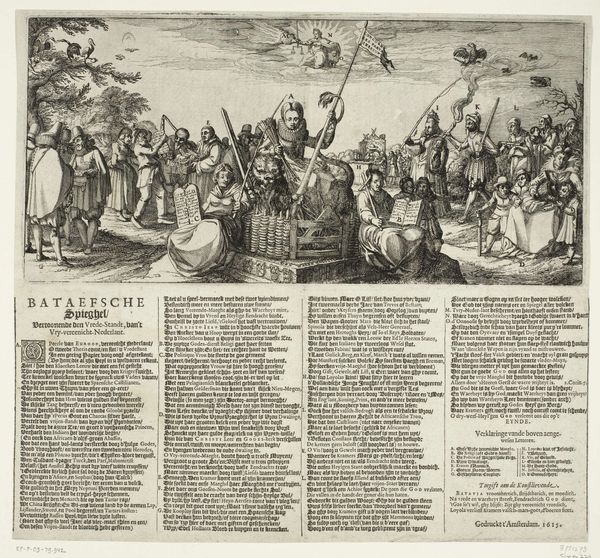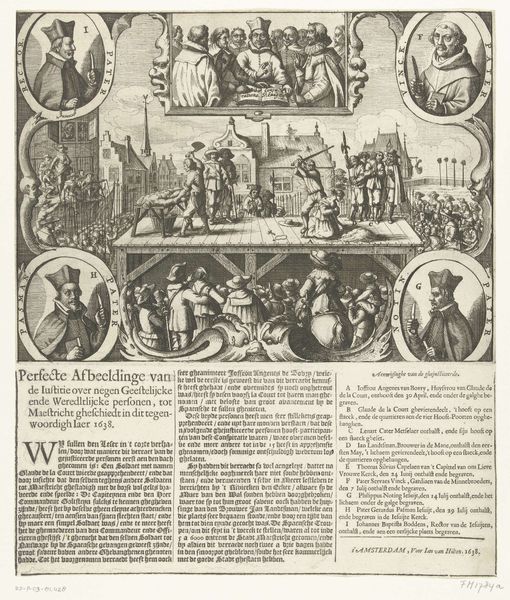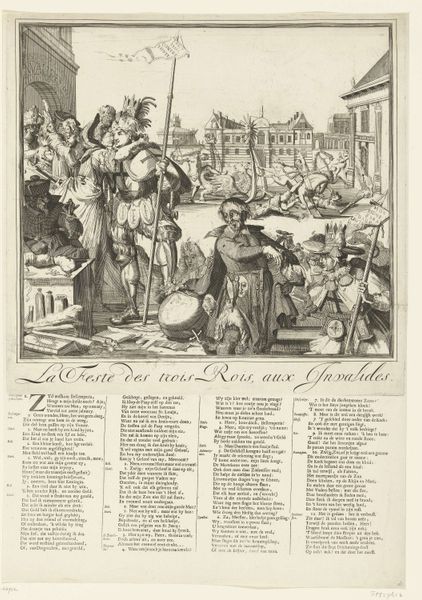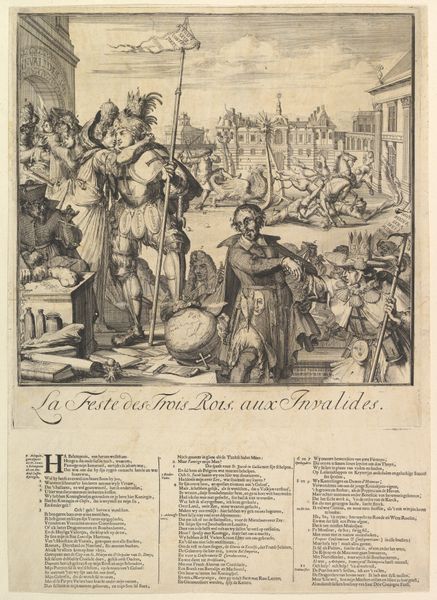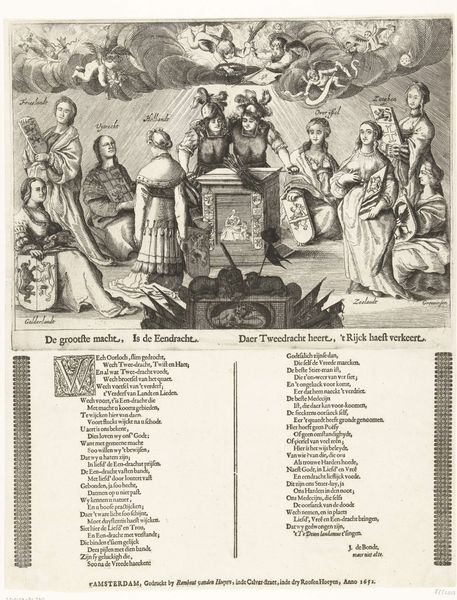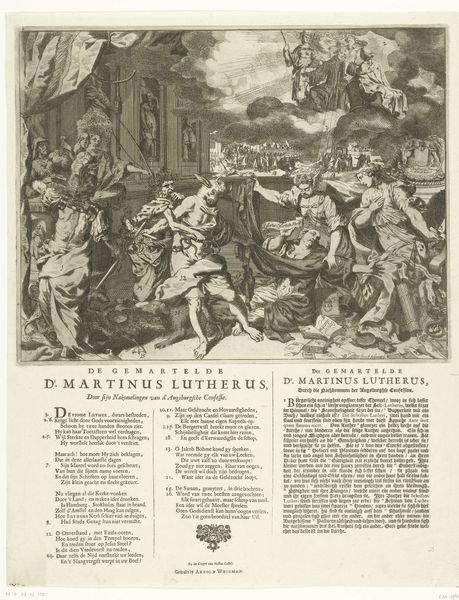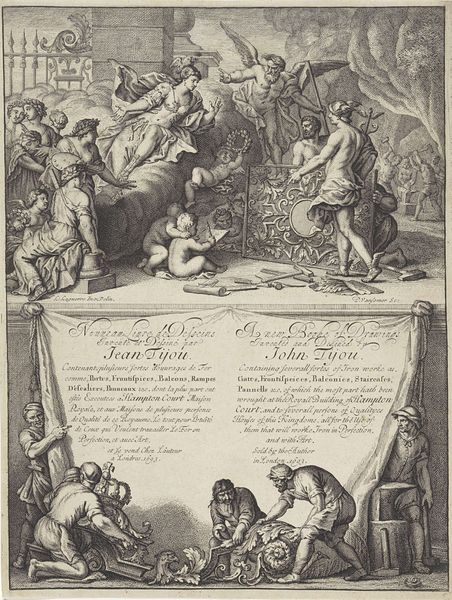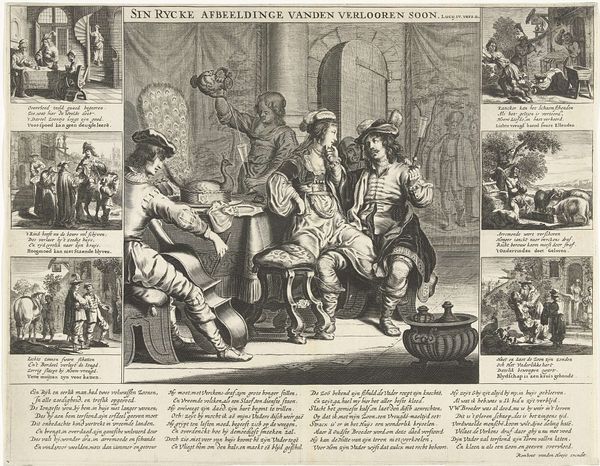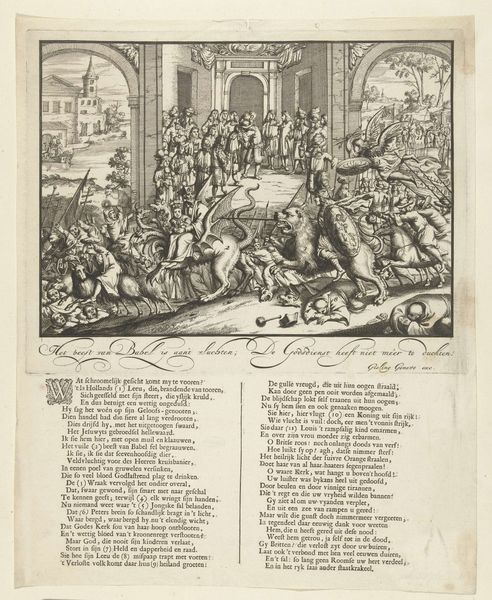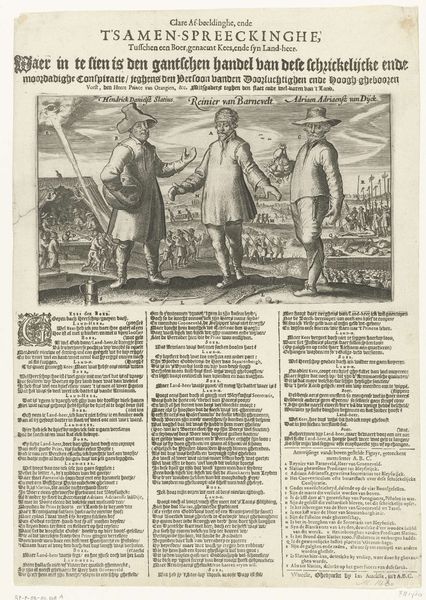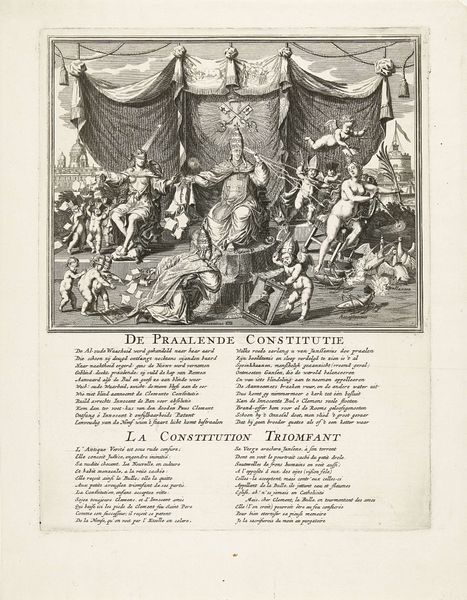
print, engraving
#
baroque
#
dutch-golden-age
# print
#
old engraving style
#
history-painting
#
engraving
Dimensions: height 260 mm, width 340 mm, height 500 mm, width 345 mm
Copyright: Rijks Museum: Open Domain
Curator: Looking at "Praalbed van Frederik Hendrik, prins van Oranje-Nassau," created between 1647 and 1649, we see Adriaen Matham's engraving depicting the deathbed of Prince Frederick Henry. My initial reaction focuses on the somber yet staged atmosphere; it feels heavy with political theater. Editor: Staged indeed! Considering this print, intended for wide circulation, I’m drawn to the act of memorializing itself. We see an emphasis on accessible material: ink, paper, and the labor of engraving replicated for distribution. What was the intention of the wide availability of such image and what did such reproduction mean? Curator: Absolutely, the act of reproduction changes everything. Think of the prominent angel soaring overhead carrying a portrait—an image signifying divine acceptance and immortality. The whole scene reads as a deliberate crafting of the Prince's legacy. Look how it synthesizes religion and earthly power. Editor: True, the religious symbolism intertwines with representations of power. The craftsmanship evident in the engraved lines –replicating detailed fabric, depicting numerous mourners – is astounding. The material effort translates to enhanced prestige. There's an inherent cost involved. How would the labour itself shape social relationships between the artist and the patrons? Curator: And there is even a loyal dog. He appears a bit out of place if we were to believe everyone around is devastated by grief. However, his inclusion is, in fact, rather formulaic, isn’t it? This print, therefore, creates an interplay between stock symbolic elements with perceived authentic depiction. The frame next to the coffin shows heraldic display to signify royal and ancestral connection, even after death. Editor: Examining its production, the act of disseminating images of the deceased prince meant shaping collective memory through material culture. These choices reinforce certain ideologies about leadership and power structures, all materialized and replicated in this very print. The symbolic weight merges with tangible production in this print, and now that is very interesting. Curator: Seeing it this way really enriches my understanding. Thanks! Editor: And thank you! Considering art as labor truly changes my understanding of cultural significance here.
Comments
No comments
Be the first to comment and join the conversation on the ultimate creative platform.
